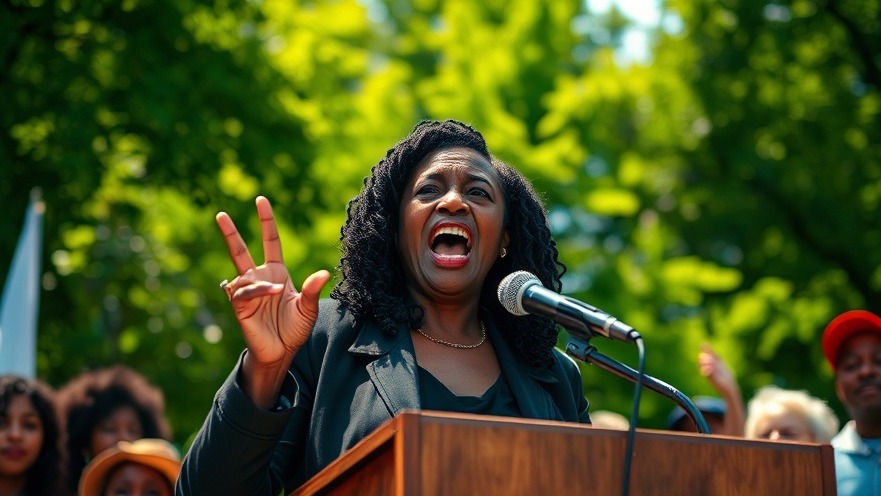
Doubling Down on Controversial Policing Reform
The streets of Washington, D.C., are once again at the forefront of political discourse as the city grapples with rising crime rates and the ongoing debates surrounding policing. Central to this heated discussion is BLM activist Nee Nee Taylor, who has emerged as a significant figure opposing former President Donald Trump’s proposed crime plan for the district. Taylor, leading her organization in resisting this initiative, has garnered attention not only for her activism but also for her outspoken calls to abolish police altogether, prompting a wave of contrasting opinions across the nation.
Empowered Voices in the Community
As violent crime surges, Taylor's stance has stirred controversy, igniting conversations about community safety, police reform, and social justice. Residents, many of whom demand effective strategies for maintaining safety without requiring militarized police presence, find themselves in a contentious environment. Taylor’s advocacy—rooted in a desire for systemic change—reflects a growing sentiment that seeks alternatives to traditional policing methods. Proponents of her mission argue that meaningful reform aligns with addressing the root causes of crime, such as poverty and lack of opportunity.
The Polarization of Public Sentiment
However, Taylor's approach has also drawn sharp criticism. Opponents argue that abolishing police could lead to lawlessness and be detrimental to community safety. A prominent viewpoint suggests that traditional public safety measures are essential for an urban landscape often destabilized by crime. The tension between these contrasting ideologies reveals a nation struggling to reconcile the ideals of justice with the practical needs for security and order.
Comparative Insights: Challenges Ahead
To better understand the regional response to crime and policing, comparisons to cities across the country provide valuable insights. Cities like San Francisco and Seattle have attempted various policing reform measures, leading to discussions about their effectiveness and the backlash from residents feeling unsafe. In many instances, these reforms sparked protests, as community members voiced frustrations over how their cities operated and the dire need for a reformative rather than an abolishing approach.
Future Projections: A Path Forward?
Looking ahead, the potential trajectories of such movements raise significant questions. How will local governments navigate the competing demands of safety and reform? Experts suggest that balanced electoral strategies might be the key. Political alignment with the community's expectations, desires for enhanced public safety, and the demand for systemic change may dictate upcoming election cycles.
The Broader Context of Crime and Activism
The nexus of crime, activism, and governance extends beyond D.C. to broader national discussions, particularly in light of rising crime trends following the COVID-19 pandemic. This has prompted not just local initiatives but also bipartisan efforts in Congress to revisit crime policies and community safety measures. Activists like Taylor exemplify a critical voice within this larger narrative—she illustrates the urgency and complexity involved in fighting for justice while grappling with public safety concerns.
Engaging with Diverse Perspectives
Debates surrounding issues like those presented by Taylor’s activism can often overlook the viewpoints of various community stakeholders. Listening to voices from all sides—whether they align with police abolition or reform—can develop a comprehensive understanding of the systematic nature of crime and safety. Engaging with these diverse perspectives also fosters civic dialogue that is crucial for democratic processes.
As we reflect on the battle over policing in Washington, D.C., it’s essential to recognize that moving forward necessitates collaboration, strong community engagement, and a commitment to seek comprehensive solutions. Perhaps the most significant takeaway from this ongoing narrative is the shared responsibility we hold in shaping safe living environments.
Conclusion: What Lies Ahead?
As the discourse around crime and policing evolves, it's crucial for citizens to remain informed and engaged in legislative updates and community dialogues. By staying actively involved, individuals can influence the trajectory of public safety policies in their cities. Only by fostering open discussions and collaborating with diverse viewpoints can we create more durable solutions that safeguard all communities.
 Add Element
Add Element  Add Row
Add Row 



Write A Comment